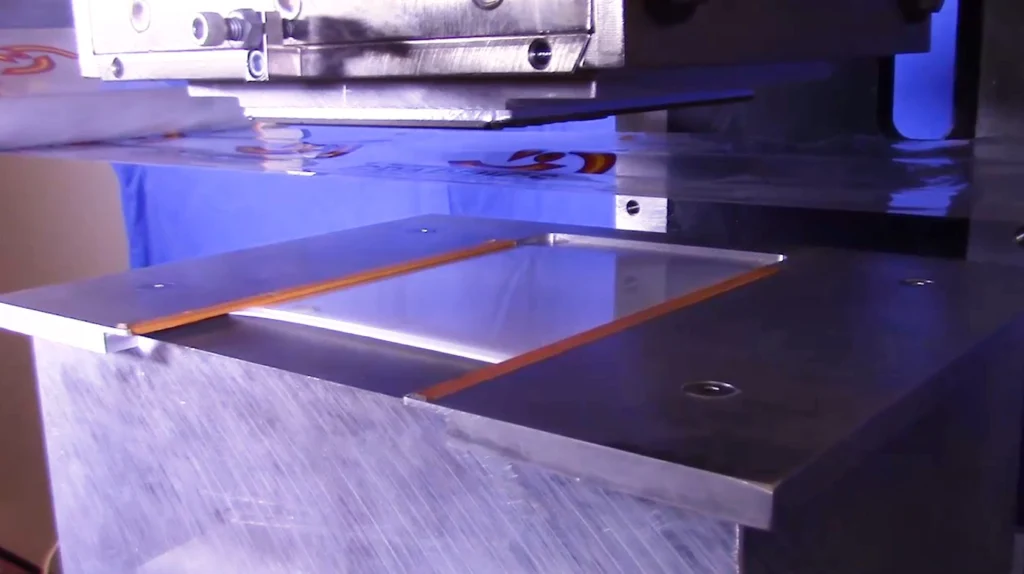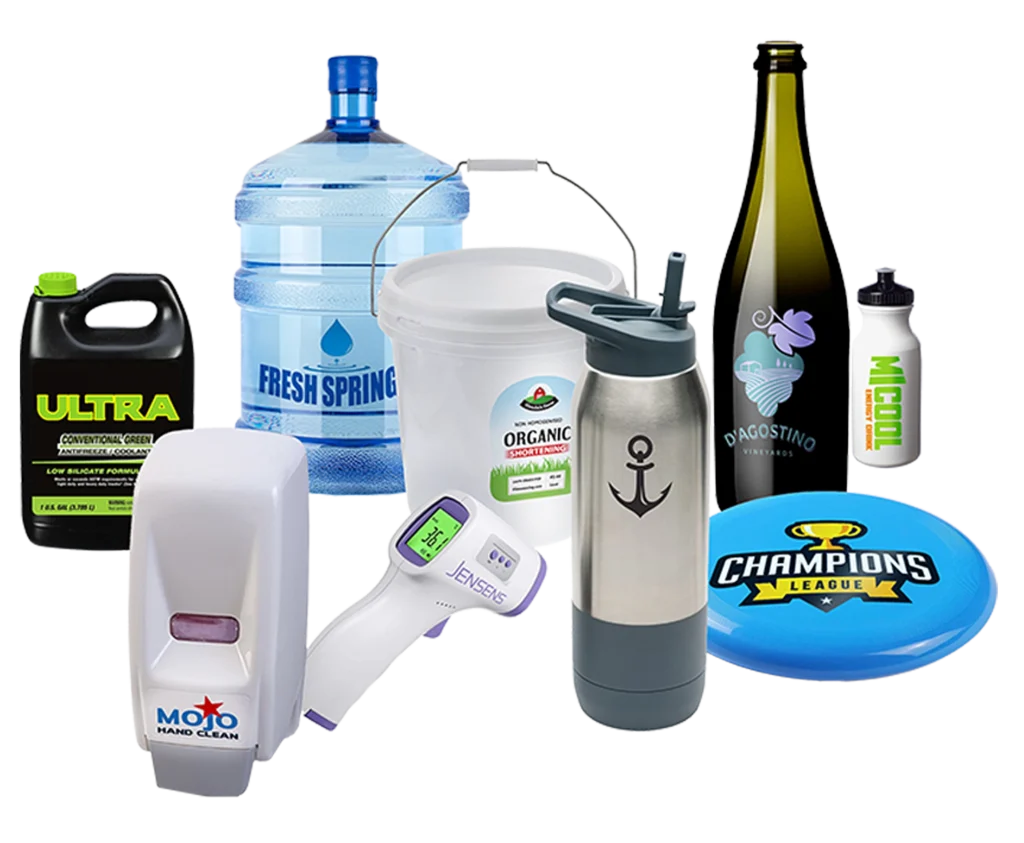By Liz Stevens, writer, Plastics Decorating
At the 2024 Plastic Product Decorating Summit in Milwaukee, Wisconsin, Kamla De La Haye of Polyfuze Graphics Corporation and Eric Steinwachs of CDigital participated in the “Heat Transfers and Polymer-Fusion Labels – Technologies and Advantages” panel discussion, during which they described their companies’ direct-to-object decorating technologies.
- How does your transfer technology work and How is it applied to the plastic part?
De Lay Haye: The Polyfuze transfer is applied with a silicone rubber die with high-temperature 80 durometer silicone rubber. This is needed to melt the graphic into the surface of the plastic. On the plastic part itself, the die mark somewhat is visible around the graphic. The die can be contoured to fit the artwork and minimize the look of the outline, or it can be intentionally made in the part and, therefore, barely visible. It is better to decorate items hot if possible, because the cycle times are faster and it won’t take as long to melt the plastic label into the plastic part.
Our labels often are confused with a heat transfer. They are identical on the roll, have an index mark and can be applied with standard heat transfer equipment. Using them just requires cranking up the temperature and lowering the pressure, but the graphic itself is a raw material and not an ink. Each label is a very thin layer of plastic that is printed on a PET carrier. When a label is pulled from the carrier film, it is fused into the plastic part, becoming part of the part itself. It can’t be pressure-washed off and chemicals cannot remove it. It is part of the plastic and guaranteed
for life.
No pre- or post-treatment, such as corona or plasma treatment, is required with the labels. They do not require treatment, because we are not trying to increase the surface energy to make something stick to the plastic. It is more closely related to plastic welding, with the plastic graphic and the plastic part fused together for the life of the part.

On the topic of locating the graphic, we have an index mark on the roll, and a photocell sensor registers each transfer.
Steinwachs: With our CDigital digital heat transfers, we decorate a lot of round parts, including pen barrels, drinkware – anything round. A heated silicone roller or a flat die with the part spinning under the die can be utilized. This can be performed on a standard heat transfer/hot stamping machine.
The transfers are digitally printed on a special roll-to-roll Xeikon digital press. The key is our patented adhesive and film technology that allows us to work with most all rigid plastic material. Certainly, there are times when pre-treatment is necessary.
Registration of each digital transfer uses a sensor and an eye mark on the transfer roll. The index is all based on the equipment. There are different ways to do it, but there is some sophisticated equipment that will not only index to the eye mark but also will locate the top and bottom to the top of the eye mark and bottom of the eye mark. So, not only are the left or right position known, but also the top and bottom.
We have utilized a hybrid pad printing/heat transfer system as well. It is an advantage if a customer has a wide variety of parts with close tolerances because the pad will make up for those inconsistencies of the parts, whereas the more firm, rigid, higher-durometer rubber roller or die will not make up for the inconsistencies.
- What are a few advantages transfers offer for direct-to-object decorating vs. other secondary processes?
Steinwachs: Typically, our digital heat transfers do not require a pre-treatment or post-cure. Since it is a dry application process, meaning no inks, solvents or thinners, parts can be stacked or immediately handled. The process is environmentally friendly, as well as a dry process in a factory environment. Another advantage of heat transfers is applying multiple colors in one pass. Even automated pad printing or screen printing machines have to apply each color separately to create a multiple-color image. In addition, it is a much more permanent image on the product vs. a pressure-sensitive label or sticker.

De La Haye: The Polyfuze process has similar advantages to digital heat transfers. Being a dry process is a big advantage in a molding facility. The adjustments on a hot stamp machine to apply the transfer are time, heat and pressure. Because it actually is the heat doing the work and not the pressure from the machine, much larger transfer labels can be produced with a smaller machine. Most customers utilizing the process are injection molders that already have hot stamping or heat transfer equipment in house. The ability to utilize existing equipment is a huge advantage for the process.
- Are there sustainability advantages to transfer decorating technologies?
De La Haye: Polyfuze is designed for durable goods that have a very long shelf life. It is not a good fit for a single-use product like a sour cream cup or an ice cream cup. We really are designed for products that will have a five- or 10- or 15-year lifespan. At the end of that life, the product can be 100% recyclable because the graphics are made out of plastic, not inks. The transfer label does not have to be removed; it can be reground along with the part and turned into something new.
Steinwachs: For recycling, some labels – like pressure- sensitive labels – have to come off the part first, while a heat transfer would not have to be removed. Also, if there are defects and scrap, the plastic can be reused without removing a label. There are advantages to this process where possibly the label and part are two different materials, and the label must be removed. I am not a recyclability expert, but there are advantages over other processes for recyclability.
In terms of matching process constraints to customer needs, De La Haye described Polyfuze’s constraints. “As long as the product has at least 50% olefin plastic,” she said, “Polyfuze can decorate it. Some customers are using crazy materials to make pallets. They are decorating pallets that are made from hemp. And we have had pallets with coffee grounds in them, pallets with wood chips and pallets with carpet fibers. As long as there is at least 50% of an olefin plastic in the pallet, Polyfuze will fuse into the parts.”
- What are the limitations of working with 3D and curved objects?
Steinwachs: When working with curved objects, I always refer to an example with a wine glass and a beer glass. A wine glass is bulbous; a difficult shape to apply a transfer to because the image is printed on film. Wherever the film starts to wrinkle when wrapped around a shape, there will be a problem. We can work with a tapered object like a beer glass because the transfer film can lay flat without wrinkles. Textures on the molded plastic also can be a challenge. A fine or light texture is okay for heat transfers. When it comes to heavy textures or deep textures, the image only will transfer to the top area of the texture, never getting down into the valleys, potentially creating voids on the image. If you are uncertain if the part has too much texture, it is best to test the heat transfer first to determine the print results.
De La Haye: With Polyfuze’s carrier film, we must be sure the silicone die matches the shape of the graphic and the 3D object. But trying to put a large transfer label on something like a basketball would not work because the film would recoil. It just depends on the size of the label and the size of the part. Because it involves melting the two surfaces together, it is crucial to make solid contact between the graphic and the die.
For more information, visit www.cdigital.com and www.polyfuze.com.


